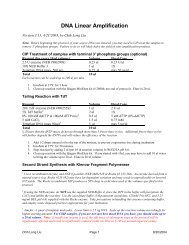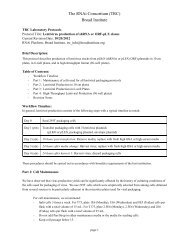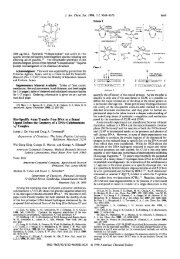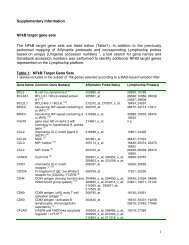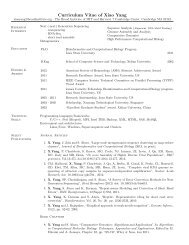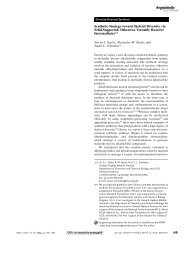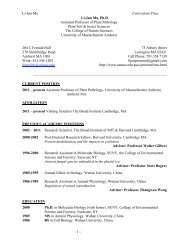The RNAi Consortium - Broad Institute
The RNAi Consortium - Broad Institute
The RNAi Consortium - Broad Institute
You also want an ePaper? Increase the reach of your titles
YUMPU automatically turns print PDFs into web optimized ePapers that Google loves.
Version Notes:<br />
1/22/07<br />
4/1/09<br />
8. Repeat step 8 for a second wash.<br />
<strong>The</strong> <strong>RNAi</strong> <strong>Consortium</strong> (TRC)<br />
<strong>Broad</strong> <strong>Institute</strong><br />
9. Place the pDNA binding plate back on the collection block. Centrifuge at 1,800 x g for 5 minutes at 4<br />
°C to dry the pDNA binding plate.<br />
10. Place the pDNA binding plate on a clean DNA Storage Plate. Add 140 µL Elution Buffer to each well<br />
of the pDNA binding plate and incubate for 10 minutes at room temperature. Centrifuge at 1,800 x g<br />
for 5 minutes at 4 °C. Expected elution volume: 120-130 µL DNA per well.<br />
11. Seal the DNA Storage Plate with a Bio-Rad microseal film and store at -20 °C or -80 °C.<br />
Note: Use a plate seal that can withstand the storage conditions.<br />
1) Innoculation with fresh glycerol copy (V2) of hairpin-pLKO, ORF-pLX or ORF-EntryClone<br />
bacterial glycerol stock(s): Using a fresh bacterial glycerol stock to inoculate growth increases both<br />
overall yield and well-to-well yield consistency of pLKO.1 plasmid DNA.<br />
2) Alkaline Protease added to the lysis buffer: Adding Alkaline Protease to the Lysis Buffer improves the<br />
yield and quality of plasmid DNA. See http://www.promega.com/faq/wizsv.html for more information.<br />
3) Discontinued using Alkaline Protease in the lysis buffer: We experienced Alkaline Protease (AP) quality<br />
issues that caused significant DNA prep fails and consumed a great deal of time in troubleshooting. <strong>The</strong><br />
drawback of the inconsistent AP quality outweighed the advantages AP can offer.<br />
4) Discontinued 70 °C (30 minutes) incubation prior to binding DNA to the binding filter: We<br />
determined that this is an unnecessary step.<br />
page 4



